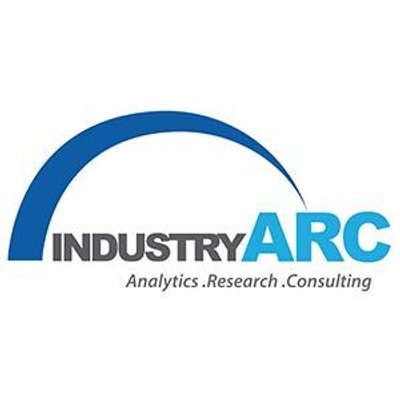Rising Health-Related Issues and a Desire To Live a Healthier Lifestyle Among Consumers Is the Driving the Dried Blueberries Market Growth

Hyderabad, India – July 24, 2021 /MarketersMedia/ —
Dried Blueberries (RIS) Market size was estimated at $4.8 billion in 2020, projected to grow at a CAGR of 6.3% during the forecast period 2021-2026. Dried Blueberries industry has witnessed huge demand in its application in various fields such as confectionery, personal care products, bakery products, and others. The dried berries are dehydrated fruits that are processed to lengthen their shelf life. Blueberries are rich in antioxidants, Vitamin K, iron, vitamin C, potassium, and other soluble dietary fibers are abundant in berries such as grapes and blueberries. They are often consumed as health or dietary supplements, and are used in the manufacturing of personal care products as they aid in the treatment of various skin and hair care issues such as acne, aging, hair thinning. Blueberries are delicious, nutritious, and widely consumed. They are also referred to as superfoods as they are low in calories and extremely beneficial to health. The blueberry bush Vaccinium sect. Cyanococcus is a flowering shrub that grows blueberries, which are berries with a bluish, purple hue. Blueberries are available in a number of ways, such as fresh or processed fruit, juice, and dried or flavored berries. Blueberries are used in confectionery, baking products, and a number of recipes such as jellies, preserves, and snack foods, as well as a breakfast cereal additive. Highbush and lowbush blueberries are the most popular varieties of blueberries. Owing to increasing awareness of the nutritional benefits of dried blueberries, food producers are focusing on them, resulting in a rise in demand around the world. Natural origin products with natural ingredients are becoming more common as people become more health conscious. Dried blueberries have become much more common as an ingredient in bakery and confectionery products.
Dried Blueberries Market Segment Analysis – By Product Type
Based on Product Type, Dried Blueberries market is segmented into Sun Dries, Freeze Dried, Infused Dried, Others. Infused Dried segment was accounted for the largest revenue market share in 2020 owing to its high energy sources. Blueberries are rich in antioxidants. Free radicals are unstable compounds that can kill cells and lead to aging and diseases like cancer. Antioxidants protect body from them.
Request for Sample Report @ https://www.industryarc.com/pdfdownload.php?id=510650
Report Price: $ 4500 (Single User License)
Dried Blueberries Market Segment Analysis – By End User:
Based on End User, Dried Blueberries market is segmented into Confectionery, Bakery Products, Beverages, Dairy Products, Cosmetics, Cereals & Snacks Bar. Bakery Products is accounted for the largest revenue market share in 2020 owing to the fact that bread, rolls, cookies, pies, pastries, and muffins are some of the most common bakery products, and many of them contain dried blueberries. These are usually made with oat flour or oat meal.
Dried Blueberries Market Segment Analysis – By Geography
Based on Geography, North America Dried Blueberries Market accounted for the 35% revenue share in 2020. This is majorly attributed to the presence of key market players such as Graceland Fruit and Maduri Farms. Rising health-related issues and a desire to live a healthier lifestyle among consumers is the driving the market growth.
Dried Blueberries Market Segment Analysis-Drivers
Health Benefits of Blueberries:
Antioxidant properties in blueberries help to reduce the risk of heart attacks. Antioxidants aids in the control of free radical damage that occurs in the early stages of atherosclerosis. Furthermore, dried blueberries are high in anthocyanins, which are powerful phytochemicals responsible for the blue color of berries. Aside from that, anthocyanins aid in the battle against free radicals. According to a report published in 2017 by functional food and superfood, clinical and epidemiological studies have shown a connection between anthocyanins and improved cardiovascular health.
Inquiry Before Buying @ https://www.industryarc.com/reports/request-quote?id=510650
Dried Blueberries Market Segment Analysis-Challenges
High Cost of Blueberries:
Blueberries have a good reason for their high price. They take a long time to grow and need very unique growing conditions. That is the reason people who don’t have the time to plant their own blueberries, stock up on them when they’re on sale or also put them in the freezer if necessary.
Dried Blueberries Market Segment Landscape:
Product launches, mergers and acquisitions, joint ventures and geographical expansions are key strategies adopted by players in the Dried Blueberries Market. Dried Blueberries Market top 10 companies are Helsu International BV, Karen’s Naturals, Bergin Fruit and Nut Company, Shoreline Fruit, LLC, Meduri Farms, Royal Nut Company, Oregon Berry Packing, Inc., del Monte Foods, Inc., Kiantama Oy, CAL-SAN Enterprises Ltd, Nturipe Farms, LLC.
Acquisitions/Product Launches:
In August 2019, Del Monte Pacific Limited Announces Plans To Restructure Del Monte Foods’ Supply Chain In The United States. In the United States, DMPL’s subsidiary operates ten factories.
Key Takeaways
According to the USDA’s agricultural research service, eating blueberries will reduce the risk of a heart attack in women by 33%.
According to the World Health Organization, nearly 17.8 million people die each year as a result of cardiovascular diseases. Furthermore, dried blueberries can help reduce the risk of heart attack, and it is expected to be a major driver of market growth.
Muscle soreness and fatigue are common side effects of strenuous exercise. Local inflammation and oxidative stress in the muscle tissue contribute to this. Blueberry supplements can minimize molecular damage, resulting in less soreness and decreased muscle performance.
However, market growth is expected to be limited by the high price of dried blueberries and the limited supply of blueberries in some countries.
About IndustryARC: IndustryARC primarily focuses on Cutting Edge Technologies and Newer Applications market research. Our Custom Research Services are designed to provide insights on the constant flux in the global supply-demand gap of markets. Our strong team of analysts enables us to meet the client research needs at a rapid speed, with a variety of options for your business. Any other custom requirements can be discussed with our team, drop an e-mail to sales@industryarc.com to discuss more about our consulting services.
Contact Info:
Name: Venkat Reddy
Email: Send Email
Organization: IndustryARC
Phone: (+1) 970-236-3677
Website: https://www.industryarc.com/
Source: MarketersMedia
Release ID: 89037530








